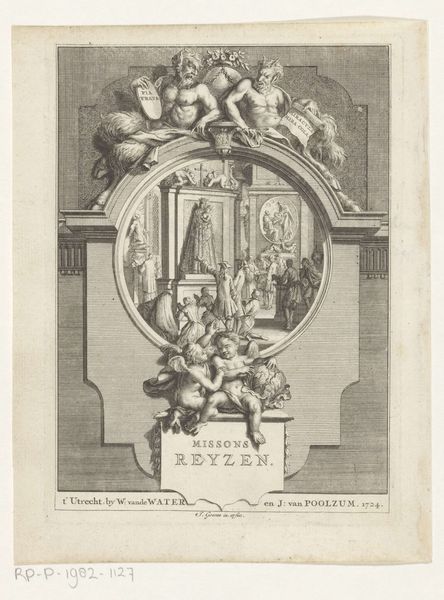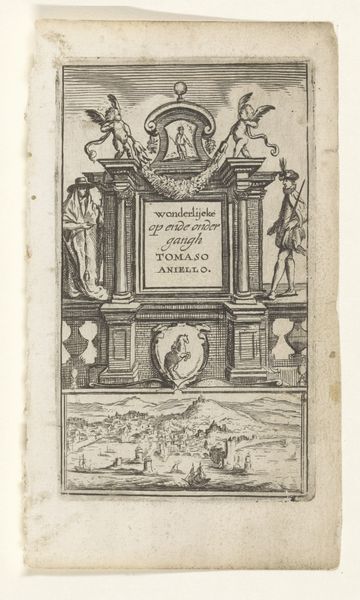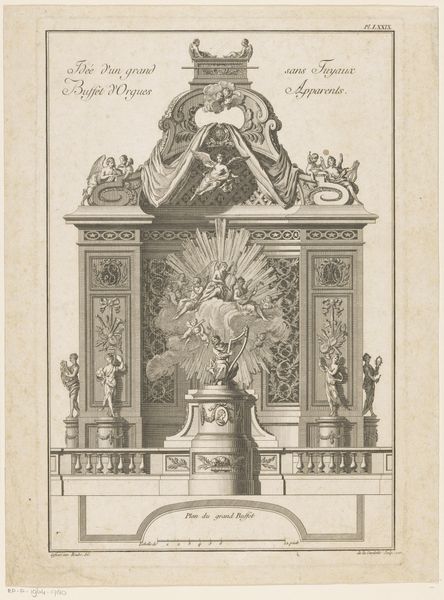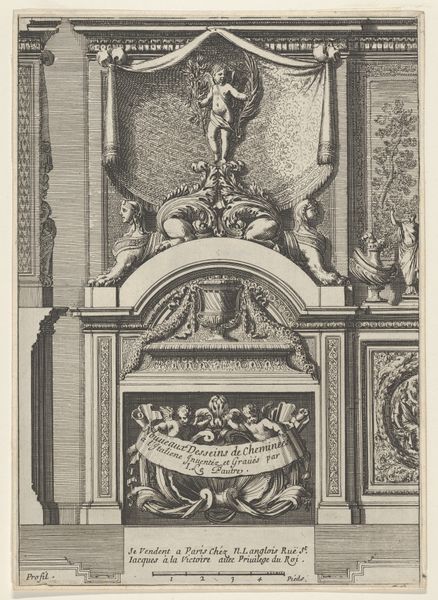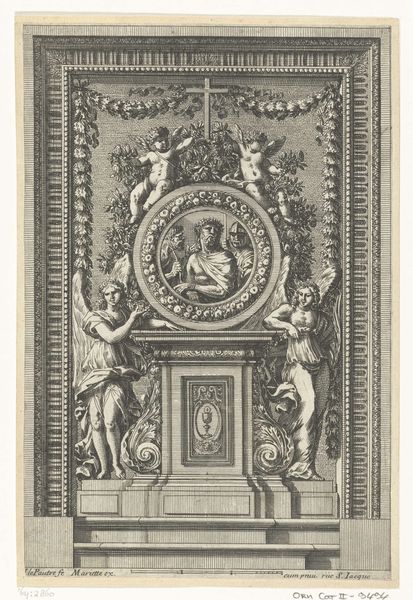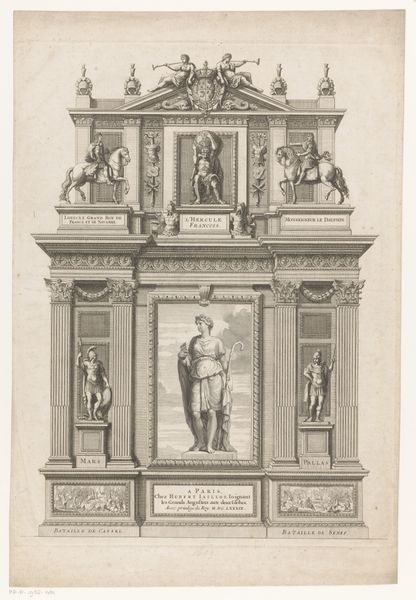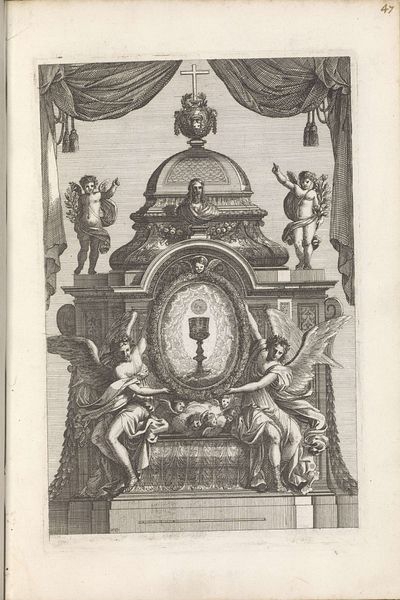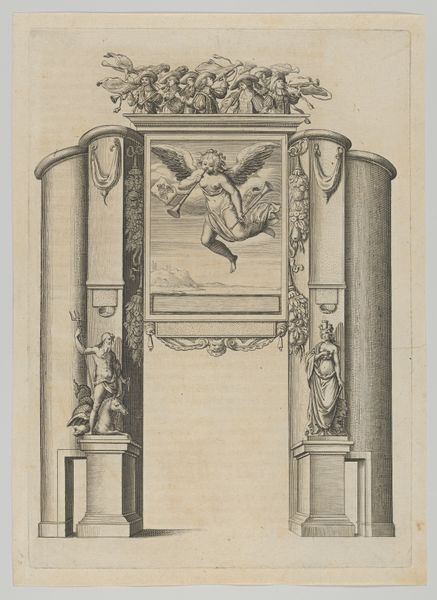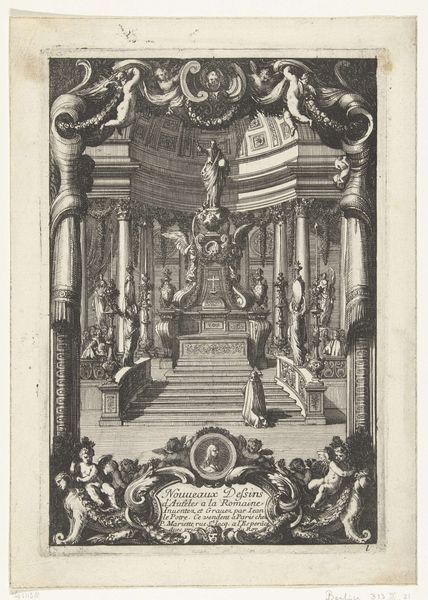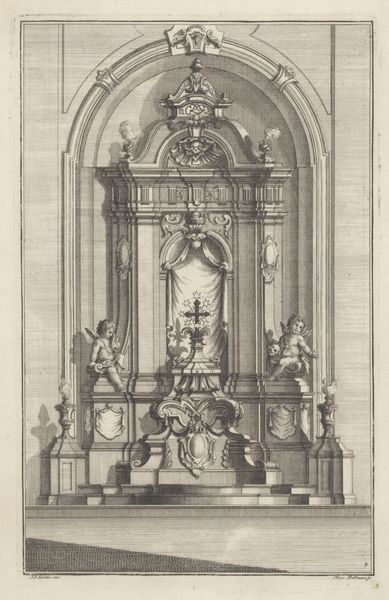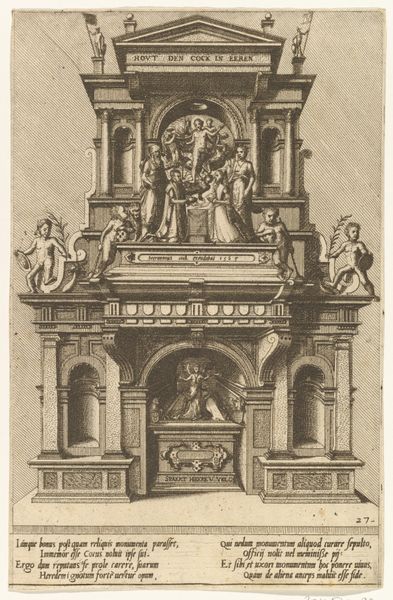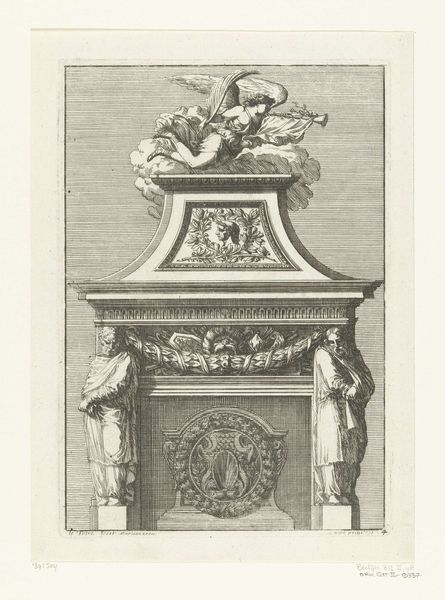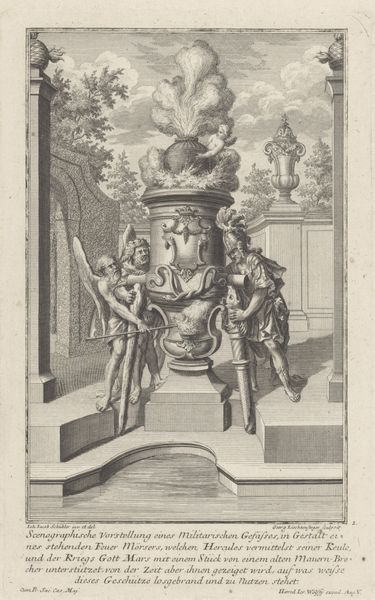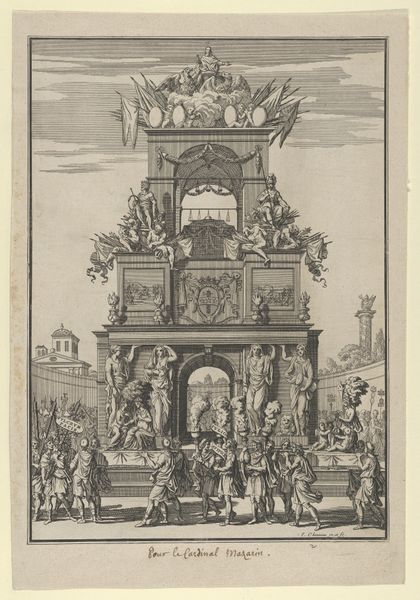
Praalgraf voor admiraal Jacob baron van Wassenaer van Obdam 1711 - 1729
0:00
0:00
janlamsvelt
Rijksmuseum
print, sculpture, engraving, architecture
#
baroque
# print
#
sculpture
#
history-painting
#
engraving
#
architecture
Dimensions: height 191 mm, width 142 mm
Copyright: Rijks Museum: Open Domain
Editor: This engraving by Jan Lamsvelt, dating from around 1711 to 1729, depicts the tomb of Admiral Jacob van Wassenaer van Obdam. I’m struck by the level of detail, particularly in the depiction of what seems like a sculptural monument. What stands out to you about this piece? Curator: For me, the image speaks to the cultural function of art in memorializing figures of power. Consider how the print disseminates the Admiral's legacy. What political message do you think this grand tomb, and its reproduction, aimed to communicate about the Dutch Republic and its naval power? Editor: It definitely projects an image of strength and prestige, especially with the naval scene on the tomb’s base and all those coats of arms. But wasn't the Admiral actually defeated in his final battle? Does this elaborate memorial gloss over a more complex reality? Curator: Exactly! This raises interesting questions about the politics of memory. The image actively shapes public perception, prioritizing heroism over defeat. The baroque style itself, with its opulence, serves to amplify this effect. How do you think the context of the Rijksmuseum, as a national institution, further frames our understanding of this print today? Editor: Being in a museum like the Rijksmuseum lends a certain authority. It suggests this isn’t just a depiction of a tomb, but a piece of national history carefully curated and presented for our consideration. Does the artwork help consolidate the Admiral’s role in Dutch naval history? Curator: Precisely. It's an active process of meaning-making, reinforced by the museum's imprimatur. Examining such commemorative art reminds us that history is not merely a recounting of facts, but a carefully constructed narrative reflecting particular values and power dynamics. It’s fascinating how art serves as a battleground for shaping historical narratives. Editor: I agree. Looking at it this way, I now see it less as a simple depiction of a tomb and more as a statement about national identity and the complexities of historical representation. Thanks for sharing your perspective!
Comments
No comments
Be the first to comment and join the conversation on the ultimate creative platform.
